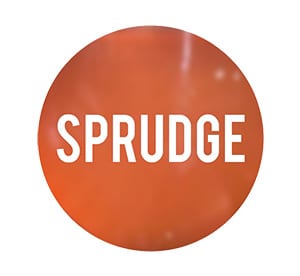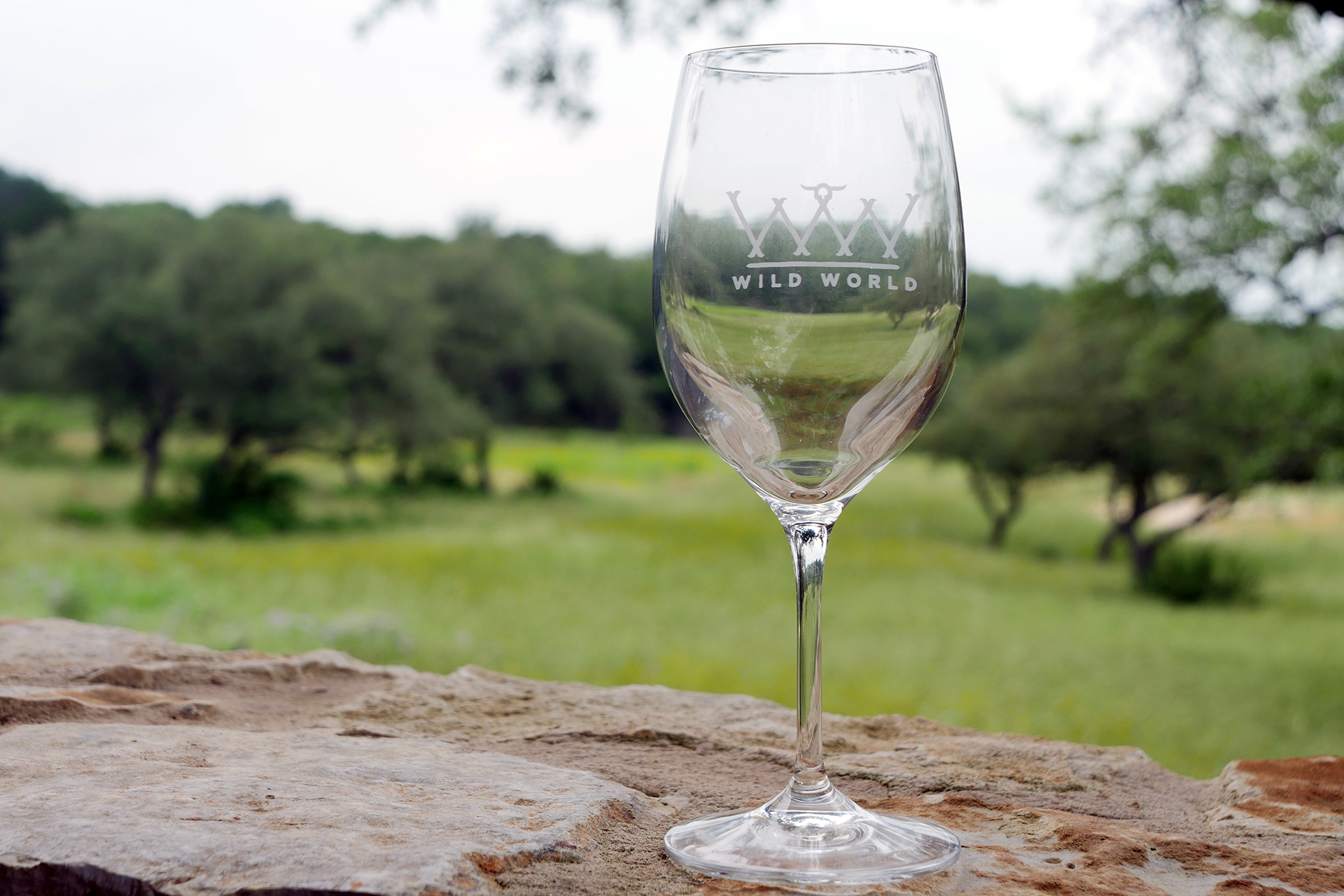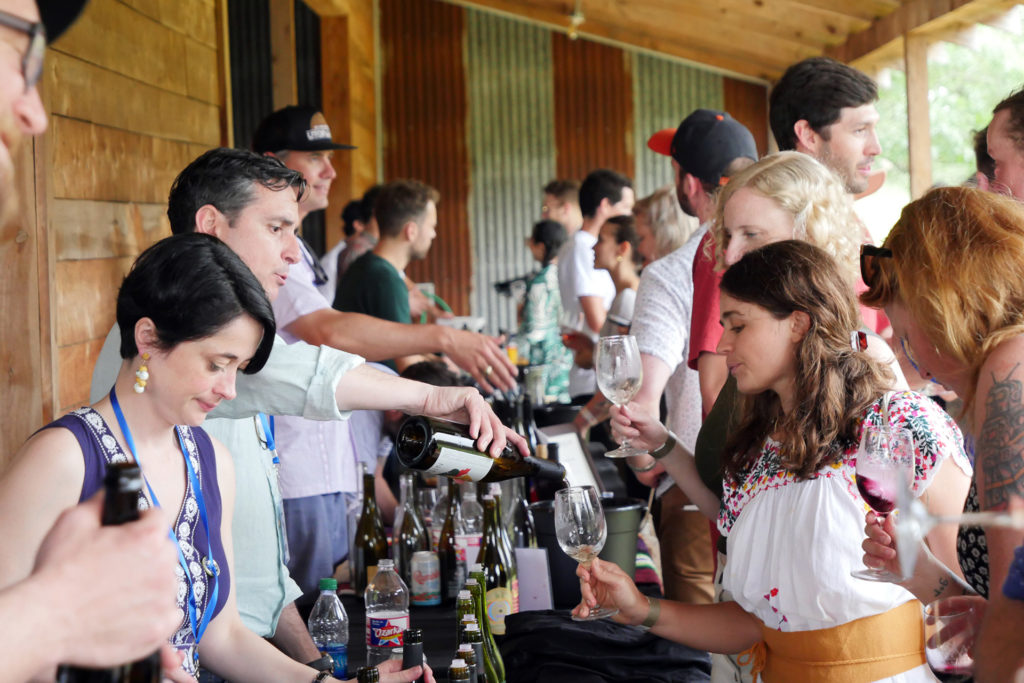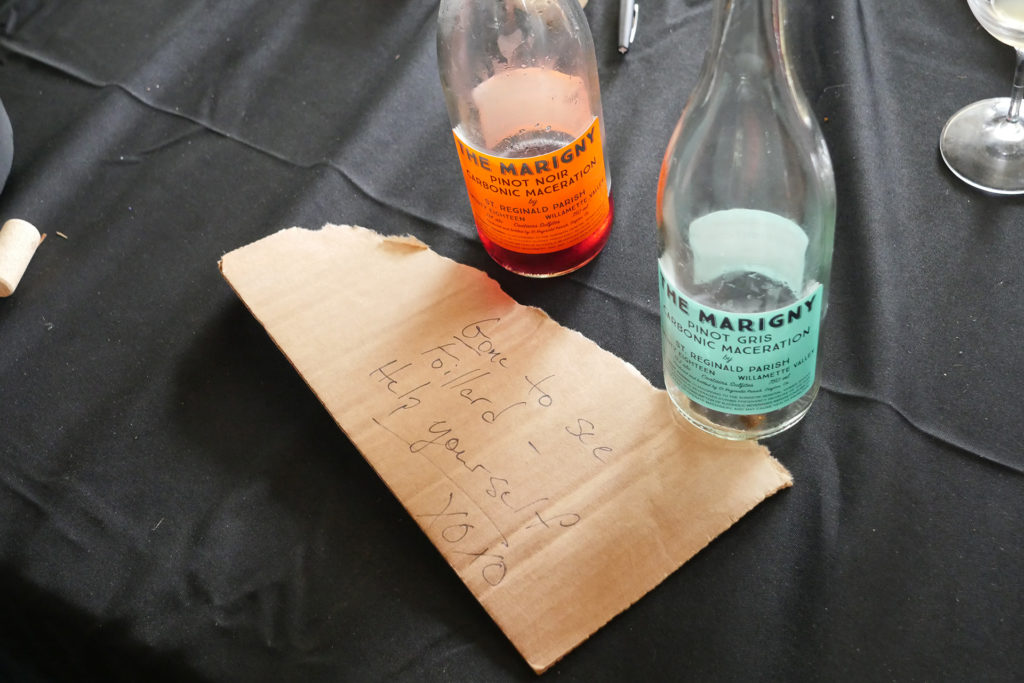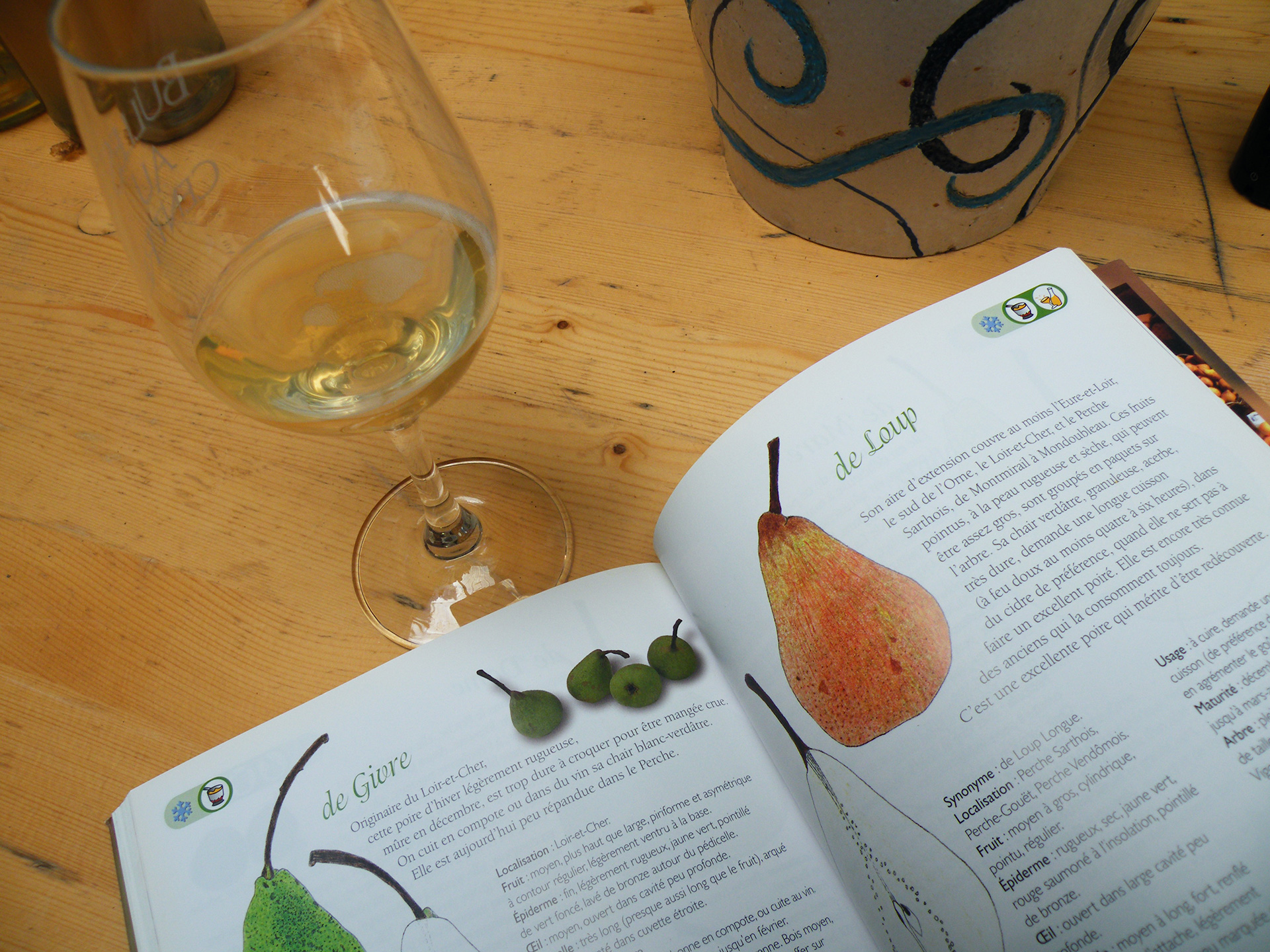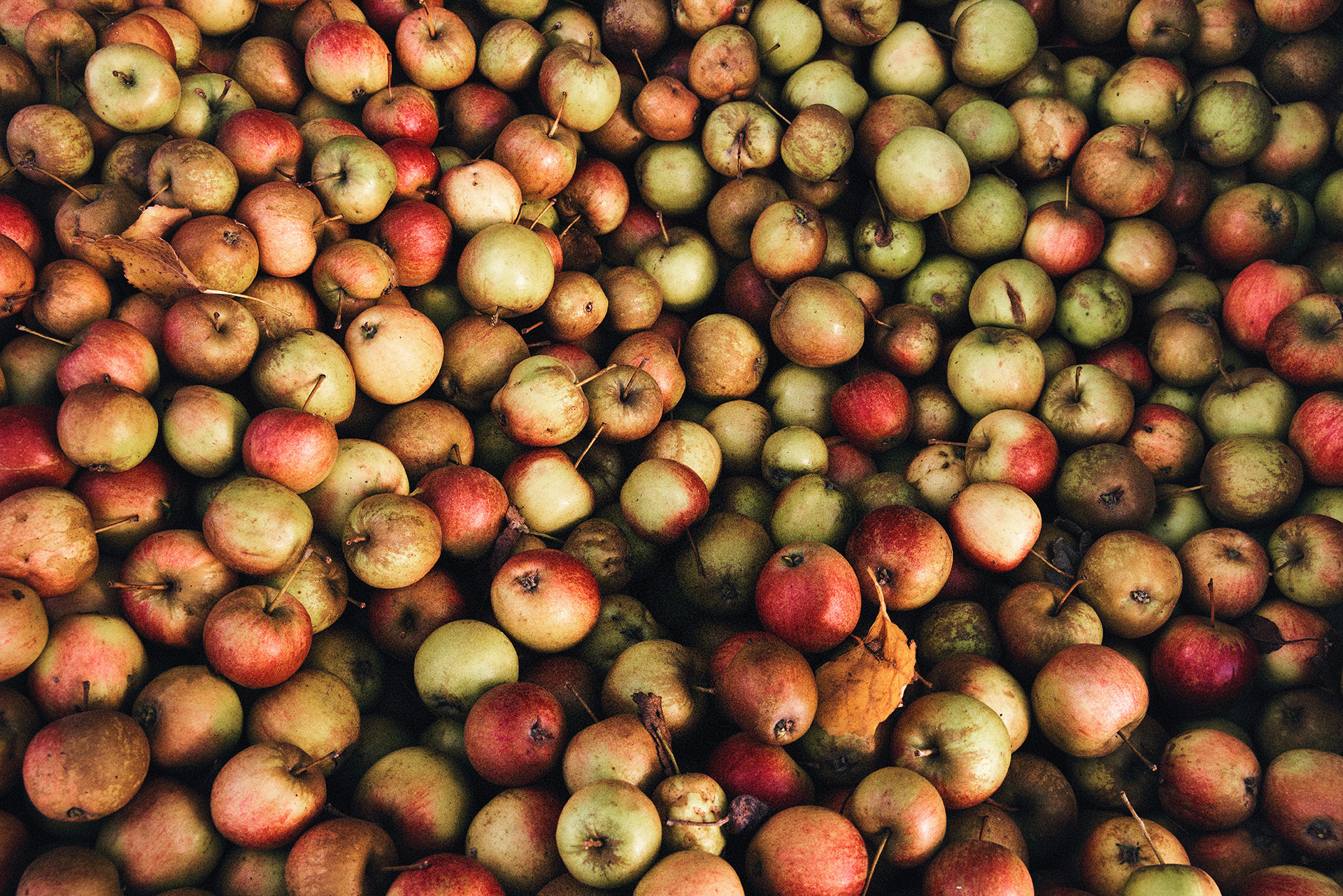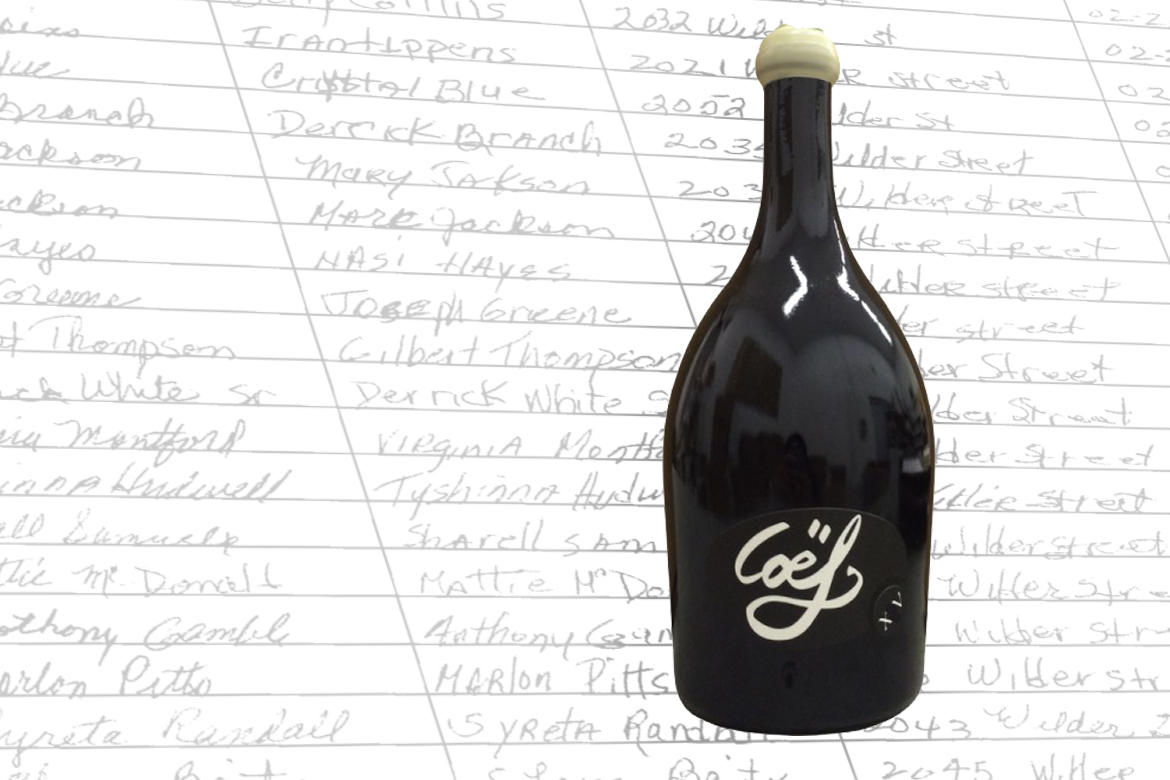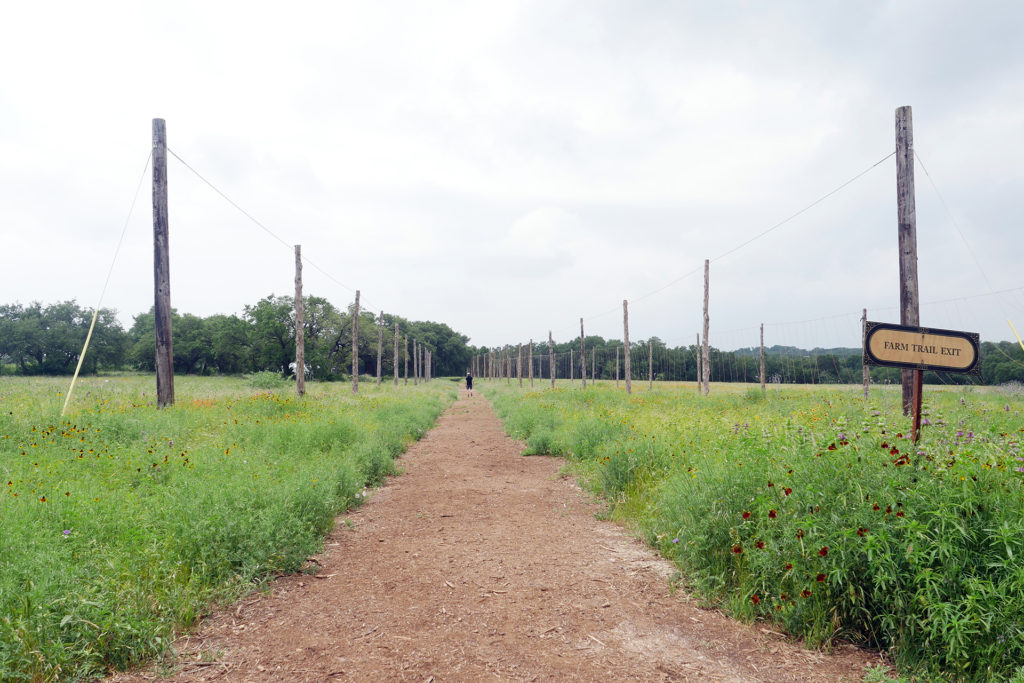
There’s a saying round these parts that if you don’t like the weather in Texas, wait a minute and it’ll change. The truth of this quaint sentiment anxiously awaited all foreigners (read: non-Texans) over the weekend of May 18th and 19th, where Austin’s Jester King Brewery hosted the first-ever Wild World Natural Wine Festival. Over the course of the mostly outdoor two-day event, the Texas weather oscillated randomly, deviously, between torrential downpours and suffocatingly balmy heat, the former providing natural rinsing stations thanks to strategically placed holes in the Jester King event space roof. You don’t truly know Central Texas weather until you have witnessed plumes of steam emanating off the tops of buildings, the heat rejecting the rain back skyward as even more falls, heaven and earth locked in a petulant game of water vapor hot potato.
The will-they-or-won’t-they nature of the weather isn’t the only thing in flux right now in the Lone Star State. Attitudes about wine are beginning to undergo a seismic shift. Natural wine, so often referred to as “what is that?” in local bottle shops, is infiltrating a larger (and younger) segment of the wine-drinking consciousness, thanks in no small party to the yeoman’s work being put in by dedicated bottle shops and minimal intervention-forward lists popping up all over the major cities in Texas. We’re still a ways away from natural wine being known simply as “wine”—or the converse, conventional wine being referred to by the moniker suggested by Marc Grand d’Esnon during the Natural Wine For The People panel: “not wine”—but there’s a real thirst for this new traditionally made wine and it’s heading toward the mainstream.
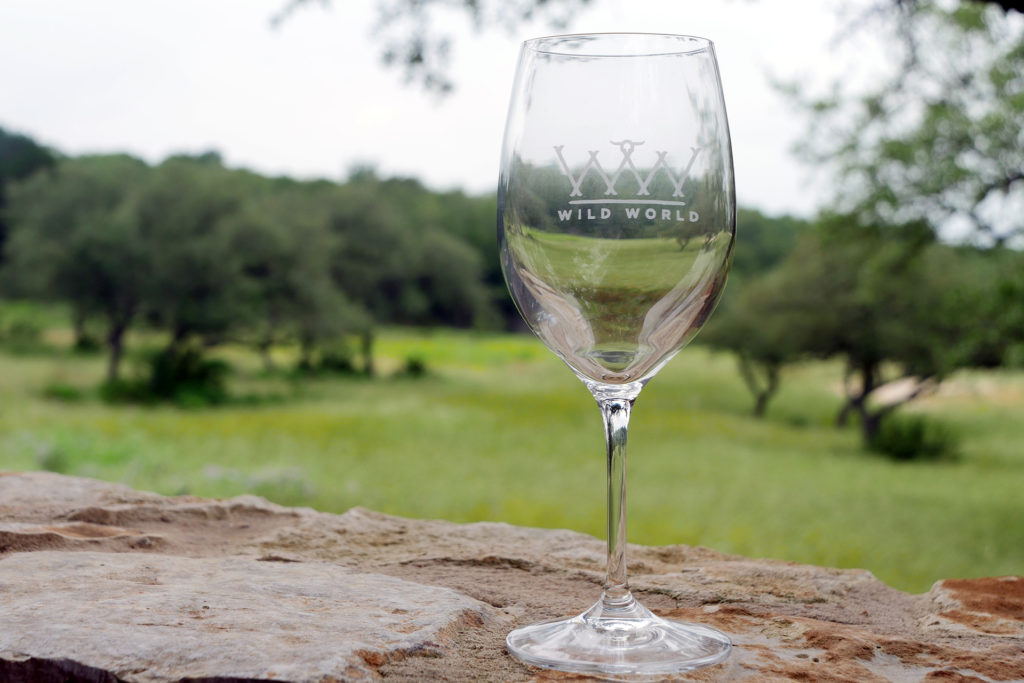
Wild World is the calcification of the moment natural wine is having right now in the state. More than just an Austin-centric event, this was a big ole Texas natural wine party. Folks from all over came out to be a part of Wild World in some capacity, be they part of a panel discussion (like Julie Buckner Lane of Bar & Garden in Dallas), or to offer a few food hall pours from a magnum of Marcel Lapierre’s Raisins Gaulois (like Sam Rozani of Austin’s very excellent bottle shop/convenience store Sunrise Mini Mart), or even to host a full-on RV-based bocce ball party (thanks to the crew from Houston’s Light Years Wine).
As a resident of the great nation of Texas—one who simultaneously experiences unearned pride for my home state and utter embarrassment for how far behind we lag on most cultural phenomena (the weather ain’t the only thing fickle here)—I went into the Wild World excited to meet and taste with international icons like Jean Folliard, Brendan Tracey, and Sébastien David. But I left with a greater admiration and excitement for not just the wines coming out of the US, but from within the state of Texas itself.
Tasting through over 200 wines from 50+ natural wine, beer, cider, and mead producers is no small task, never mind recording any cogent thoughts about them in a continually less cogent state. To help shoulder the burden, I enlisted the help of Kathy Altamirano, a World Brewers Cup judge and one of the best palates I know. Together, we saw and tasted it all, sometimes twice—for “research”—and I present you to now some of our favorite pours from the first annual Wild World Natural Wine Festival in Austin, Texas.
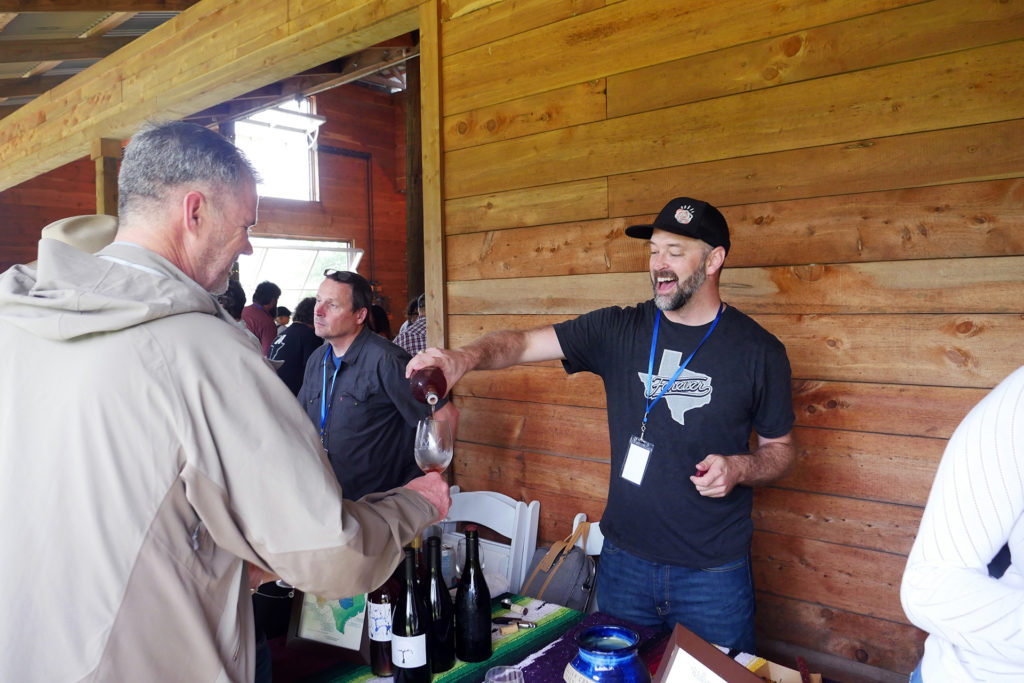
The Big and Bright Stars
Texas showed up in a big way. La Cruz de Comal, Southold Farm + Cellar, William Chris Vineyards, and ZAFA Wines (more on them in a moment), each one stars of natural winemaking in the state and all present and accounted for throughout the weekend. But perhaps what was more exciting than having all the major players under one leaky roof was the undercard, the lesser-known producers making a showing. They won’t be lesser-known for much longer.
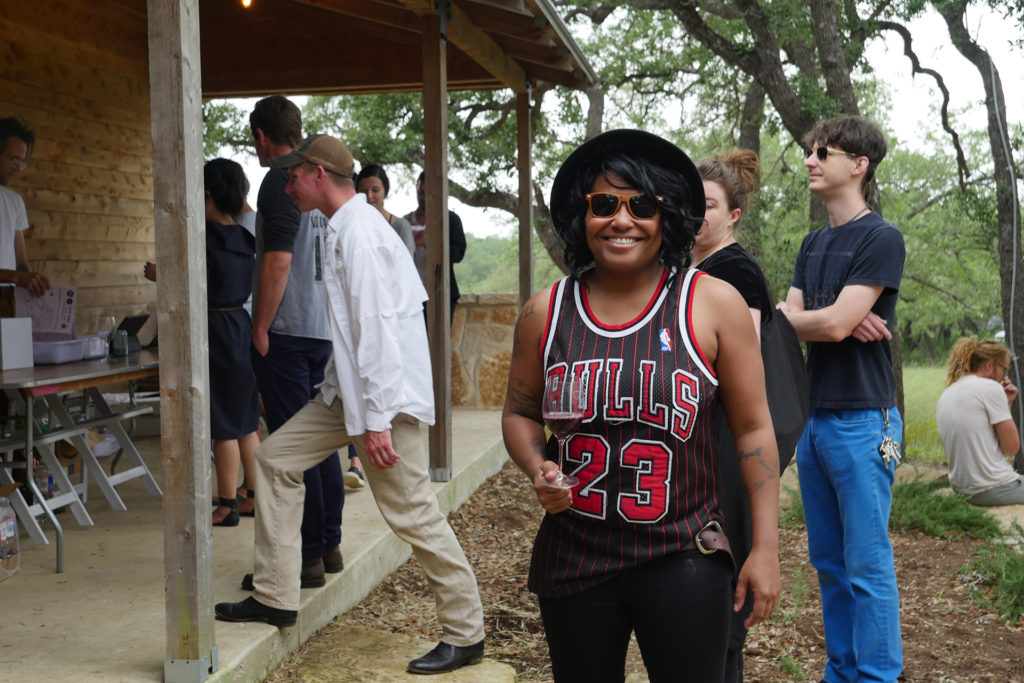
ZAFA Wines
Even as one of the biggest names in Texas natural winemaking—despite or perhaps thanks to splitting time between here and Vermont—Krista Scruggs’ wines are incredibly hard to come by in the state. Going into the weekend, I had never actually seen a bottle in the wild; if there was one producer I was dead set on finding, it was Scruggs. Luckily, the ZAFA table was strategically positioned right next to the check-in booth so the wish fulfillment came without delay and it did not disappoint.
The 2017 Don Quixote Pet Nat jumped off the table. The only offering from ZAFA at Wild World made with Texas-grown grapes, the 100% Ruby Cabernet wine was alive with a wonderful malic acidity. A light sweetness made it infinitely drinkable and was a pour I found myself making a second pass at later on in the day.
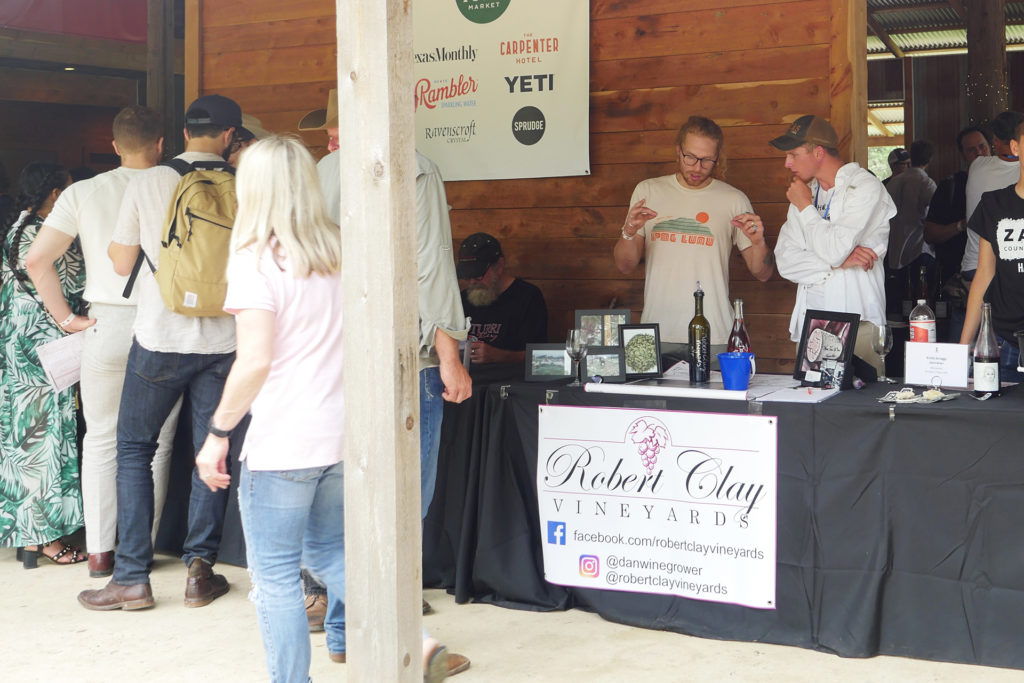
Robert Clay Vineyards
If there was any winemaker to encapsulate natural wine in Texas right now, it’s Dan McLaughlin at Robert Clay Vineyards. The Mason Country producer made the switch to organic farming and unsulfited winemaking in 2016 at the suggestion of tablemate Krista Scruggs. McLaughlin recounts one of his first forays into the natural world, when he saw the volatile acidity climbing to uncomfortable levels. Standing over the barrel, sulfites in hand, he tells me how Southold Farms’ Regan Menard and La Cruz de Comal’s Lewis Dickson had to talk him off the ledge and bottle the wine immediately. He ended up bottling six cases before pitching the additives. Turns out, those unsulfited bottles held up longer and have tasted better than their counterparts, and McLaughlin hasn’t looked back since.
McLaughlin now provides the fruit for many of the Texas natural winemakers, but his own take on 2018 Ruby Cabernet held up in its own right. The herbal, garden flower-like nose gave way to a tart sweetness, and thanks in part to the quick body, I found myself coming back to the wine, chasing the flavors in some sort of chuggable game of cat and mouse.
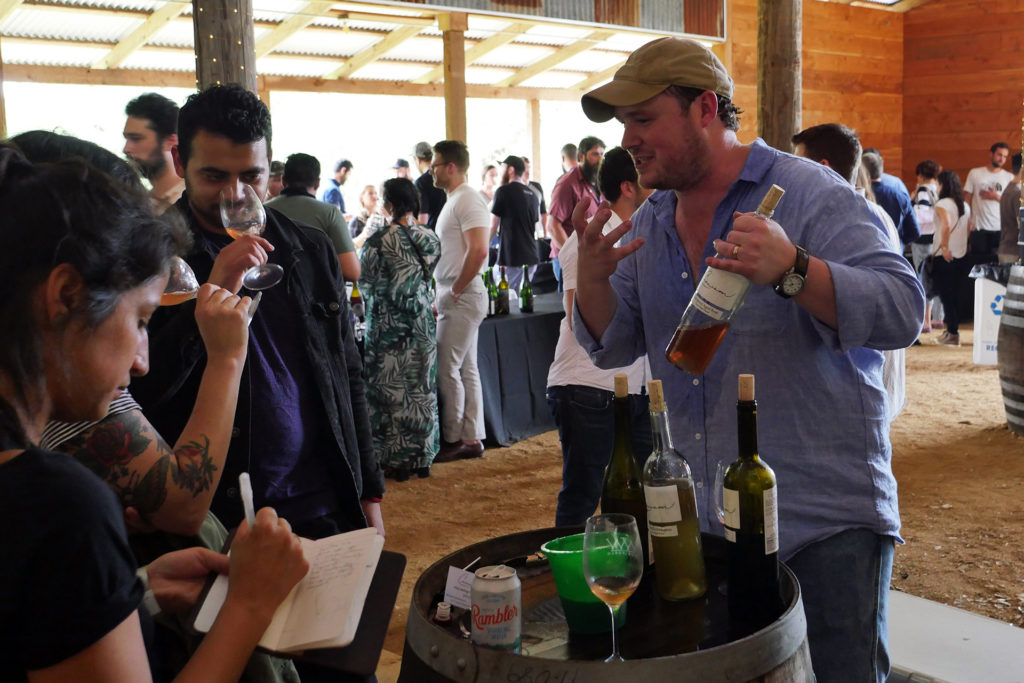
Crowson Wines
Seeking out high acidity wines at a natural wine festival is the epitome of a Faustian wager. You’re going to get exactly what you wanted but perhaps in improprietous orders of magnitude more than you intended. And even as someone more of the Homer-Simpson-in-donut-Hell ilk, the quaffs from Crowson Wines of Johnson City came as a refreshing change of pace. Two of their wines, the Sangiovese Rosé and the Mavlasia Bianca, underwent significant malolactic fermentation, giving them enough creaminess to balance out the otherwise acid-forward profiles. The heavy lactic nose on these wines presented on the palate overwhelmingly as peaches and cream and strawberry cream soda, respectively. If you like piña coladas and getting caught in the rain, the Crowson booth at Wild World is your type of place.
National Foreigners
When it comes to domestic wines at Wild World, it’s hard to deny the stranglehold the western part of the United States—California in particular, followed by Oregon in a not-very-close second—had over the proceedings. And indeed, the drinks that left the longest lasting impressions followed in similar proportion.
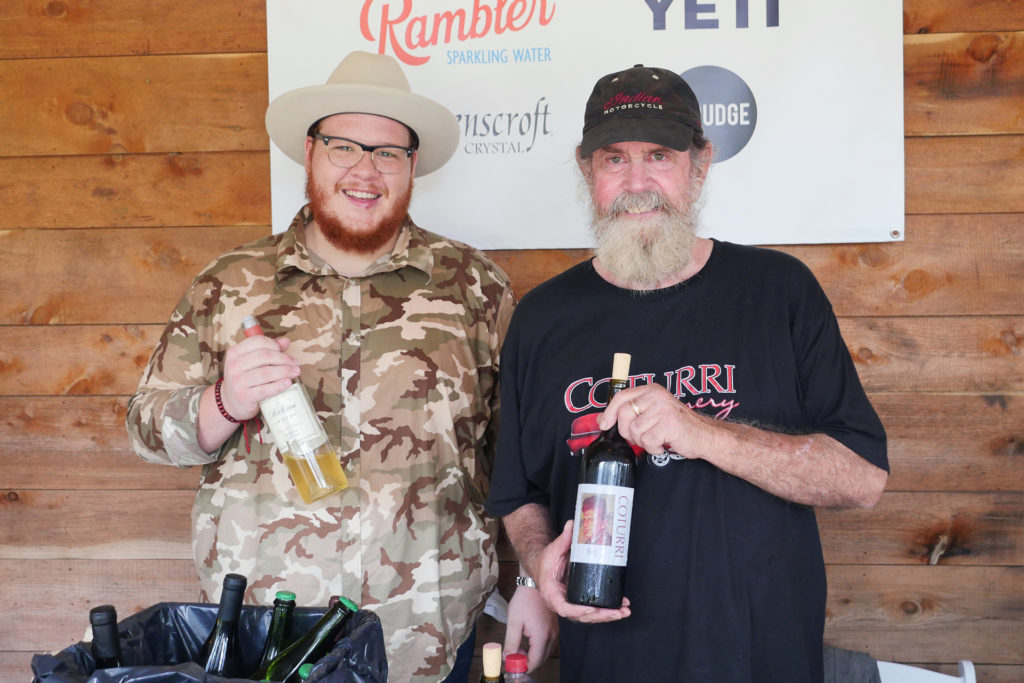
Coturri Winery
Tony Coturri is a legend in American natural winemaking. His output has the ability to run the gamut of flavor profile, from wild and funky to big, classic California reds, and the selections he brought with him to Wild World showed this versatility. Coturri’s “Red”, while lighter in body than traditional old-school Californian wines, was bursting with plum and chocolate both in the nose and on the palate, finishing with just a hint of strawberry.
Coturri’s other bottle, a Pet Nat apple cider made from 100% Gravenstein apples, highlighted the funkier side. It was peaches all the way down; stewed peaches, fresh peaches, peach fuzz, this was an infinitely refreshing expression that I want to drink any and all times the temperature climbs into the triple digits.
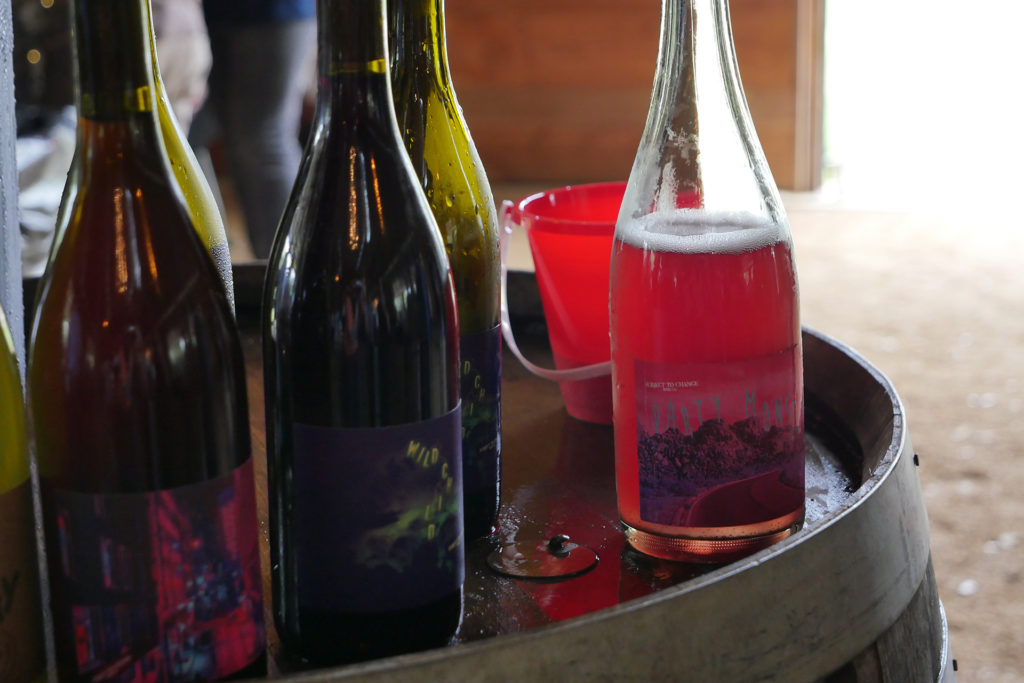
Subject To Change
Stumbling upon Subject To Change at Wild World was a delightful end-of-day find. Setup on a barrel at the back part of the event space, the Oakland négociant winemaker drew people in with their new-school aesthetic, brightly colored labels with names like Party Monster, Sleepless Nights, and Wild Child. Yet it was their plainly labeled Chardonnay that shined most brightly. With a nose of vanilla and lemon pastry, a crisp lemon acidity belied a buttery touch. This ain’t your momma’s Chardonnay, but she would for sure get down on this bottle nonetheless.
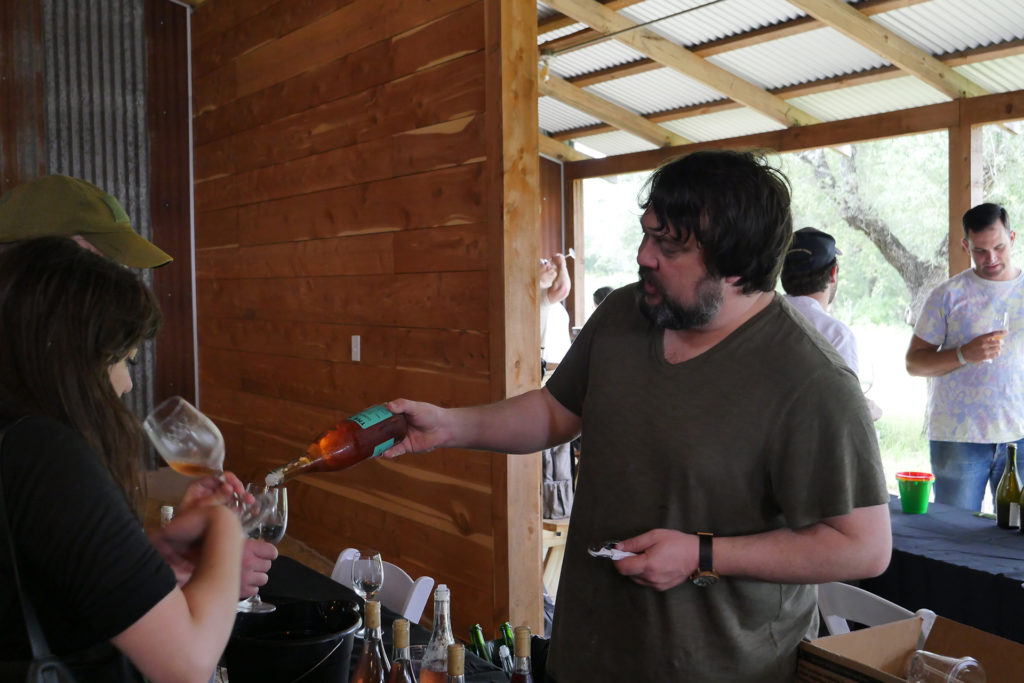
The Marigny
I’ve never met a Marigny wine that didn’t blow my hair back, and the carbonic macerated chug fest Andy Young brought with him proved no different. So crisp and clean with a body that both demanded to be gulped down and sipped academically, his 100% Pinot Gris orange wine was alive with citrus and floral aromas that stayed true on the palate. In these parts, it’s a wine you can really only get by ordering directly from Young by the case and one that makes you wonder if 12 bottles will even last through the month (they most certainly would not).
International Foreigners
While much of the European presence came via importers, there was no shortage of big name figures to make the trip across the pond. Some, like Jean Foillard, inspired fellow producers to close up shop when the chance arose to hear the icon speak. A notably Cöef-less Sébastien David came with fan favorites Hurluberlu and Kozako in tow. And perhaps due to his punk ethos (or because he was busy all day at panels), Brendan Tracey’s booth had a very DIY, pour-your-own-damn-wine vibe.
But these wines we know we love. There were a handful of other producers with varying distances from the beaten path that it was hard to pick a favorite, but these certainly stuck out.
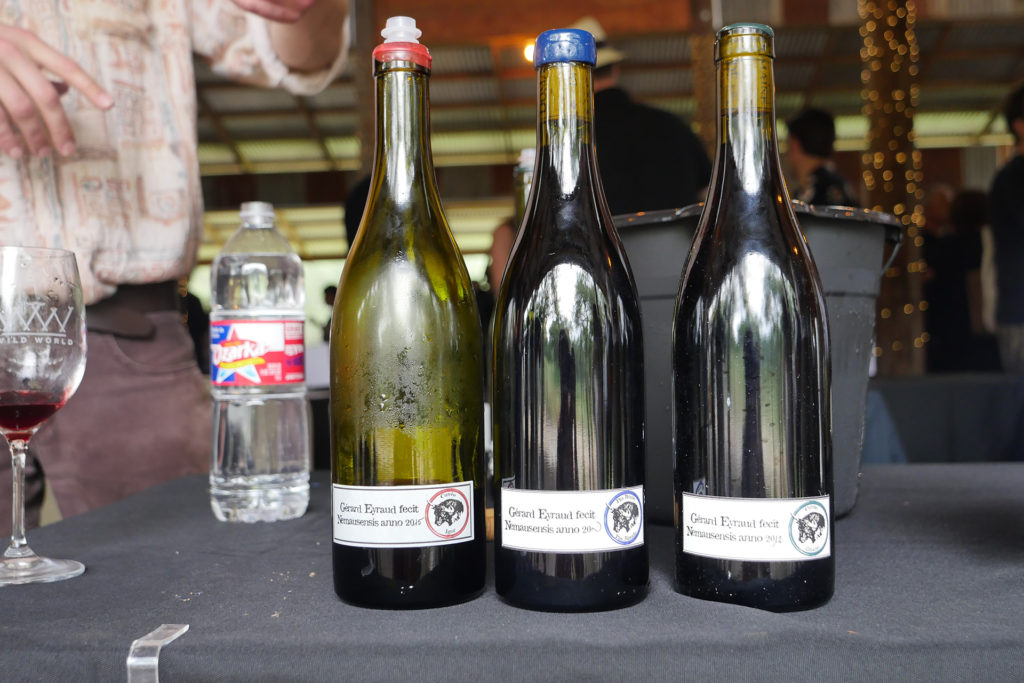
Domaine de Rapatel
Far from the acid bombs found elsewhere at the festival, the wines of Gérard Eyraud at Languedoc’s Domaine de Rapatel were exercises in sophistication. In all three of the wines on offer—the 2012 Cuvée Gitane, the 2015 Cuvée Igor, and the Pas Brune Pas Blonde of unknown age—there was a richness of flavor accompanied a spice or herbaceous note, flavor profiles more commonly associated with conventional than natural wine. My favorite from the table, the crisp, clean Cuvée Gitane, began with a nose of cherry blossom that on the palate evoked flavors of licorice and cherry. This isn’t just a wine that you can share with your friends that who have yet to drink the minimal intervention kool-aid, it’s the sort of wine that tells those who avow to not like natural wine to politely fuck off.
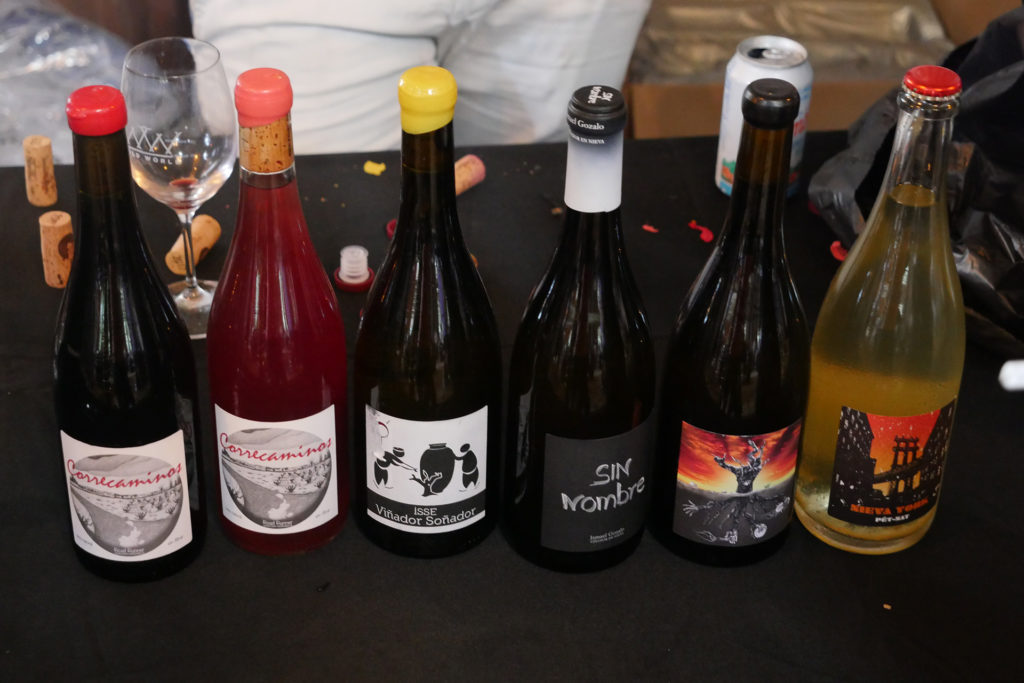
MicroBio
Represented by importer Selections de la Viña, tasting the wines of Castilla y León producer Ismael Gozalo—made under the MicroBio label—is a wild ride. One minute you’re getting notes of honeydew in the 2018 Nieva York Pet Nat, the next you’re getting a nose of really good weed in Gozalo’s Sin Nombre. This dichotomy of expression was perhaps most apparent in two wildly different bottles that came from the Correcaminos line: the 2018 Red and the 2017 Rosé. Both Tempranillo-based—though the Rosé does get a late addition of Verdejo during fermentation—the wines were worlds apart. The deep neon pink Rosé was the kombucha wine of my dreams while the Red, on the other hand, seemed almost tame in comparison, with an earthy aroma and really loves notes of black tea and dried cherry.
Not Wine
When you attend a natural wine festival at a brewery, you should expect to find a few grapeless ferments. Or mostly grapeless. Breweries like Denver’s Black Project and Tulsa’s American Solera kept to the theme of the day by bringing bottles from their sour- and wild-forward lineups that were fruited with different single varieties of grapes (though I’d argue both of these breweries are so much better when untethered from this restriction and they would have been equally well received at a natural wine festival, if not more so. But I understand why they did it). But it wasn’t just beer, ciders and meads were aplenty, and very, very good.
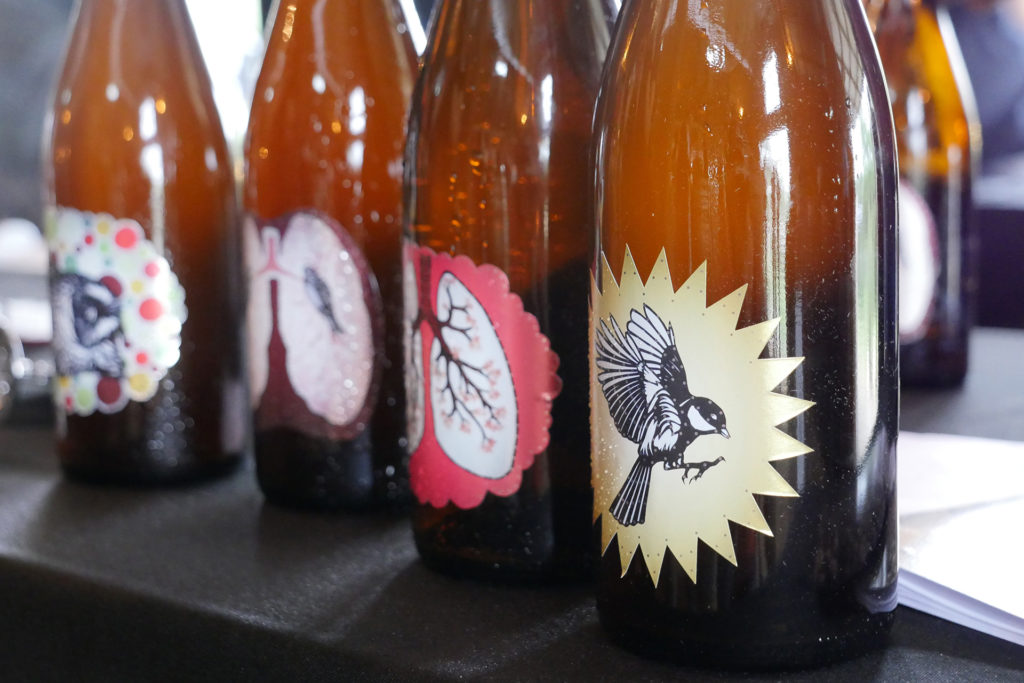
Art + Science
The Oregon-based fermenters extraordinaire at Art + Science are some of my favorite cider makers, be it perry, co-ferments, or something even more funky, so I was borderline ecstatic to find out co-proprietor Dan Rinke would be helming a booth at Wild World. Even expecting to be both shocked and awed, I wasn’t completely prepared for what Rinke was pouring: a 100% quince cider, one of the weirdest most fun things of the entire day. Spice and redcurrant aromas transformed into peppery, herbal notes on the palate with pops of orange, mango, and star fruit. I already regret not stealing the bottle from Rinke’s hand and running into the nearby woods so that I could have this quaff all to myself.
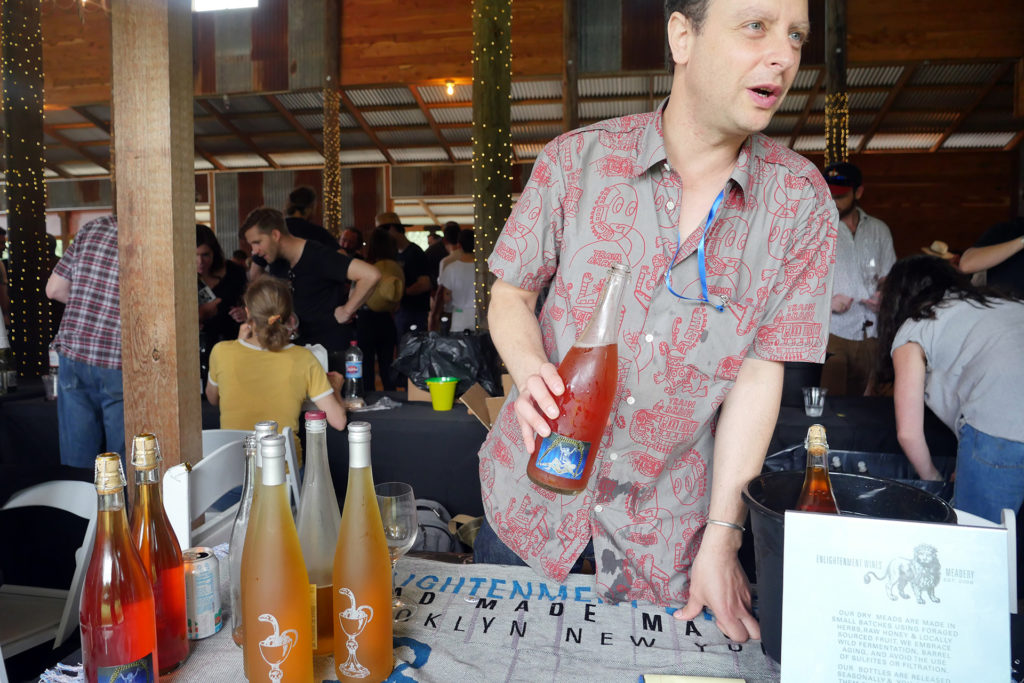
Enlightenment Wines
Small batch, spontaneous fermented, and not cloyingly sweet in the slightest, the meads from New York’s Enlightment Wines didn’t seem like meads at all. Combining locally sourced fruits and foraged herbs, the bottles at the Enlightenment table were an exercise in saying, “so wait, what is this again?” This was most true of their 2018 Night Eyes!, a co-ferment/mead consisting of apple, cherry, sumac, rosehips, and honey of course. The nose was syrupy and medicinal but the palate was all yeast and sweet peaches. Medium bodied, it drank more much mild and dry than one would associate with the format, and at a very low-for-mead-ABV of 12.5%, it would not be untoward to toy with the idea of calling this a chuggable mead.
Kathy Altamirano contributed to this reporting.
